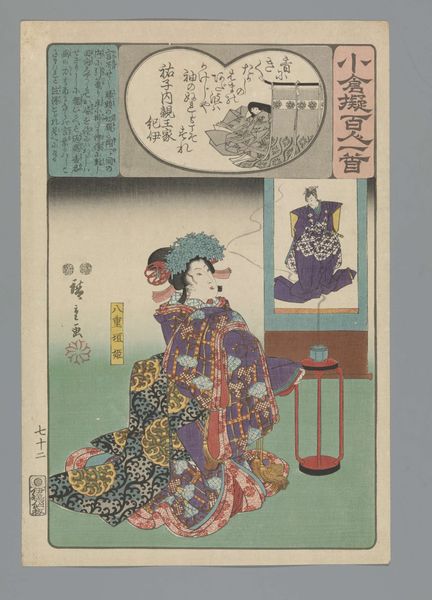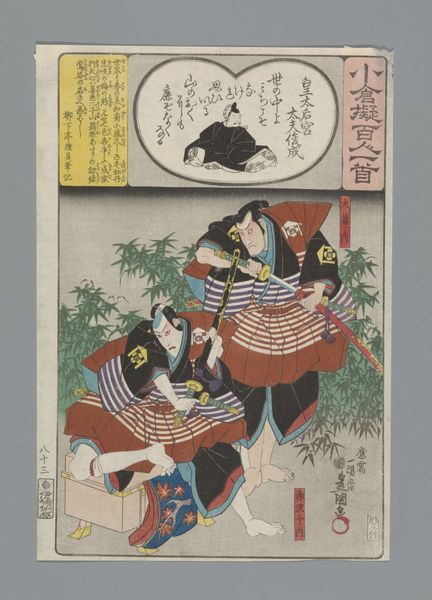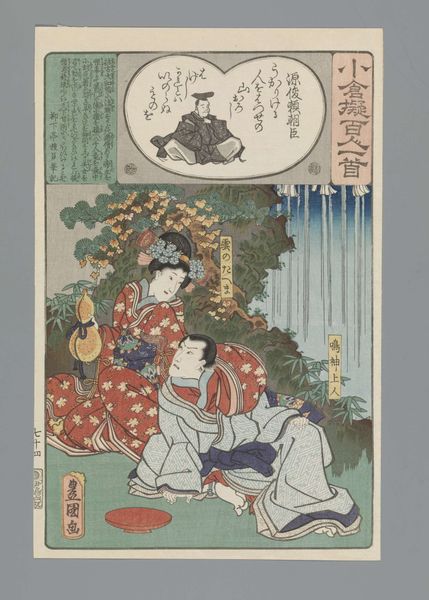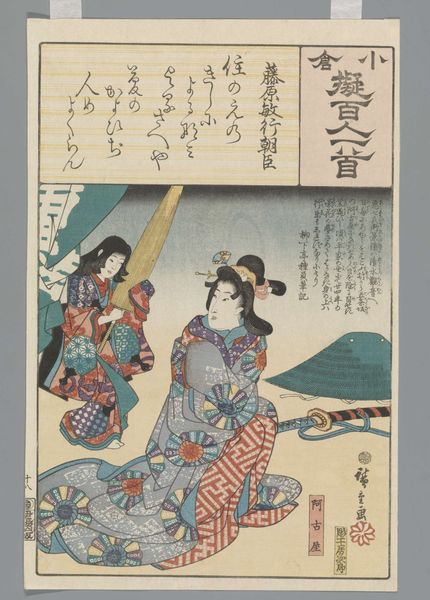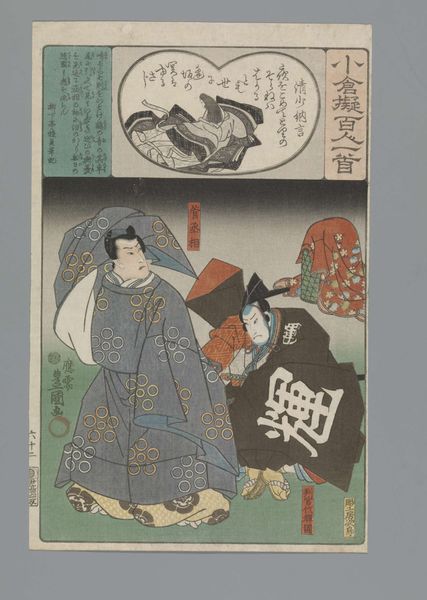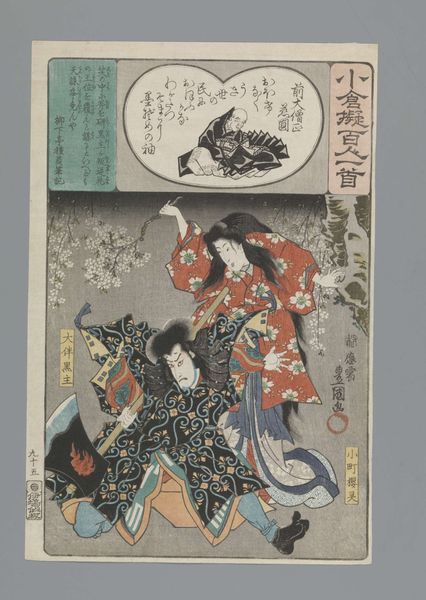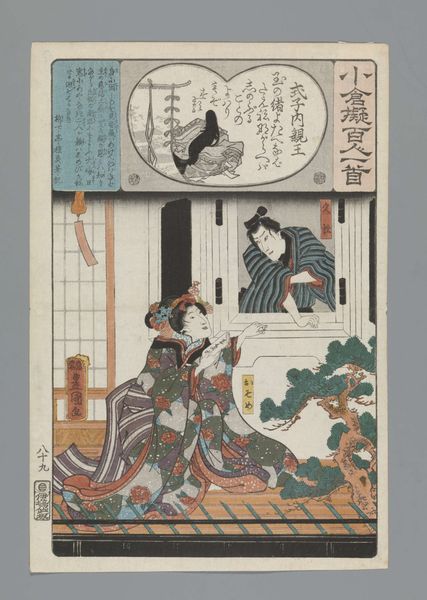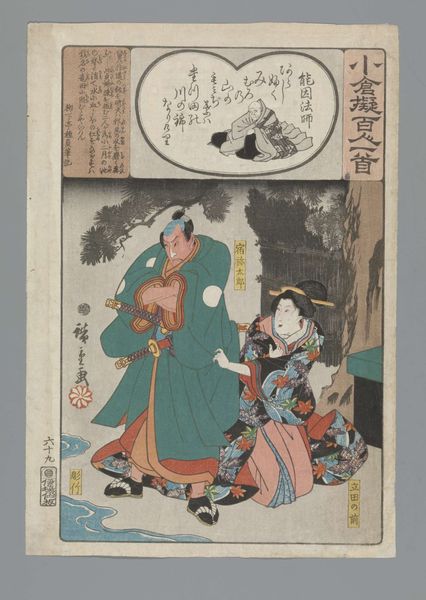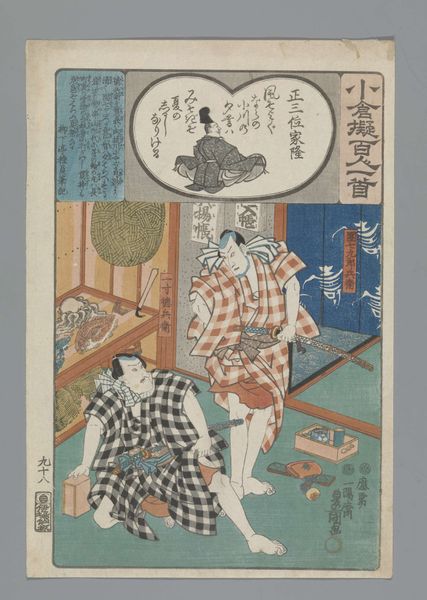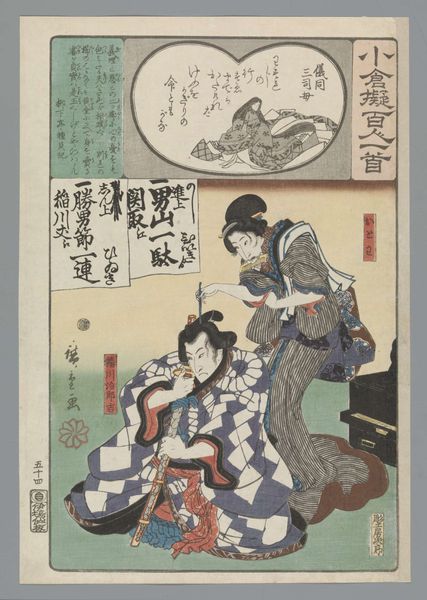
print, woodblock-print
# print
#
asian-art
#
ukiyo-e
#
figuration
#
woodblock-print
Dimensions: height mm, width mm
Copyright: Rijks Museum: Open Domain
Curator: This is "Ogura Imitation of the One Hundred Poems" by Utagawa Hiroshige, dating from around 1843 to 1846. It's a woodblock print, currently held at the Rijksmuseum. Editor: It strikes me as very calm, almost meditative. The colors are muted, and there's an enclosed, intimate feeling. It reminds me of taking time out of the day for quiet pursuits. Curator: That quiet feeling stems partially from the careful process of Ukiyo-e printmaking; think about the labor of carving woodblocks, the registration of colors, the paper selection, and the economics that supported such a popular, mass-produced art form. The materiality of this work is intertwined with its social context. Editor: Absolutely. And the two women depicted playing what appears to be Go only deepens this interpretation. Games of strategy, of course, possess profound significance across Japanese cultural history. There is, beyond its use as pure amusement, a deep connection to military theory, social structures, and meditative thought. The composition, with the inset scene above, even resembles a game board itself. Curator: The inset is thought to relate to a poem in the "One Hundred Poems" anthology referenced in the title, hinting at the literati tastes the print may have appealed to at the time. Editor: Indeed, and the costumes! Each pattern worn carries visual and cultural cues for class and station that resonate deeply. Curator: I agree, paying attention to the textile production, and considering the class associations and commercial values associated with fashion opens up more questions. Editor: What strikes me most now is the way Hiroshige managed to condense such layers of symbolism, history, and craft into one scene. The image provides a tangible link to the cultural mindset and material practices of Japan during that era. Curator: Analyzing the object has broadened my view considerably; by focusing on how Hiroshige constructed this image—with available technologies—we can expand our interpretations. Editor: It has encouraged me to remember the potent visual cues within seemingly simple everyday images, helping us perceive how traditions subtly echo.
Comments
No comments
Be the first to comment and join the conversation on the ultimate creative platform.
